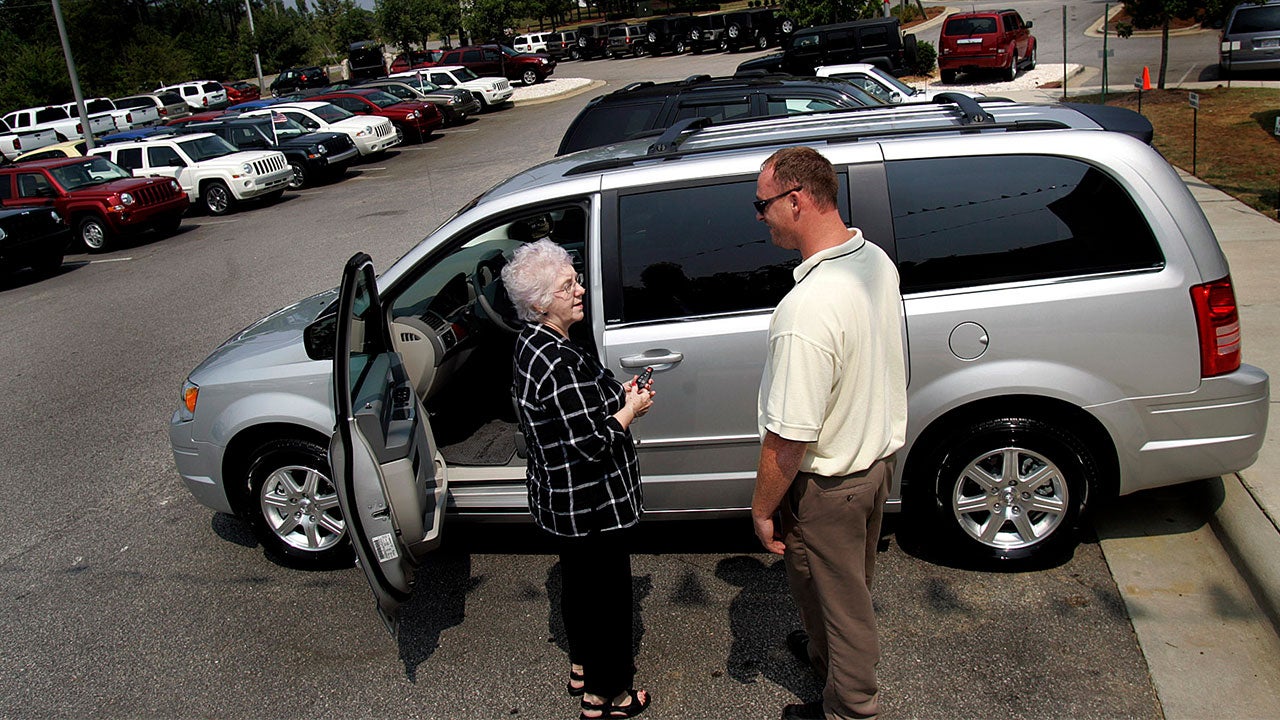The basics of a vehicle lease agreement

Key takeaways
- A car lease agreement is a legal contract laying out the terms of paying for and using a car over a set period of time.
- Before you sign a lease agreement, make sure you understand its terms, such as acquisition fees or monthly payments.
- You may also notice restrictions, such as how many miles you can put on the car annually or early termination fees.
- At the end of the lease, you can generally trade in the vehicle, buy the car, extend the lease or walk away.
When you lease a car, you’re essentially paying the leasing company (or lessor) to drive a car it owns for a set period, usually between two to four years. However, lease agreements are frequently full of specific jargon that first-time lessees may not be comfortable with. What’s more, they limit how much you can drive and what you can do with the vehicle.
Being familiar with the fees, car lease terms and restrictions of a lease agreement can help you determine if a lease is right for you.
What is a vehicle lease agreement?
A car lease agreement is a legal contract between you and the leasing company. In many cases, leasing a car is similar to renting an apartment. It lays out the terms and conditions of your lease, including the monthly costs, the length of the lease, restrictions and additional fees.
But while a lease allows you to drive a new vehicle for less than what you would pay if you were buying, you may end up paying a variety of fees and penalties.
What is in the vehicle financing agreement?
The first sections of your car lease contract will likely be focused on what you are expected to pay as part of the deal, including how the monthly payment is calculated. Then it will provide information about early termination, mileage limits, end-of-lease options and more.
Look out for these car lease details:
- Acquisition fee: An acquisition fee is the charge leasing companies assess to arrange the lease. It is generally not negotiable and costs between $595 and $1,095, according to Edmunds. You can also expect to pay a higher acquisition fee for cars with higher price tags and luxury vehicles.
- Amount due at signing: The amount you will need to pay when you sign. It includes your down payment, but the agreement will also break down any fees, credits or rebates that factor into the total amount due. For example, trading in another vehicle will lower the amount due.
- Buyout price: Look for the amount you may be able to purchase the vehicle for — along with any related fees — at the end of your lease period.
- Capitalized cost: Also called cap cost, this is the vehicle’s selling price used to calculate depreciation and how much you owe.
- Capital cost reduction: This includes any down payments, trade-ins and dealer rebates that lower the cost amount being financed.
- Disposition fee: The disposition fee covers the costs the dealer incurs to prepare the car you leased for resale. Expect to pay between $300 and $400 to cover this charge, notes Edmunds. However, you can often have the fee waived if you sign up for a new lease of the same car brand or buy the car at the end of the lease.
- Early termination fee: The agreement should explain any fees you will be charged if you need to get out of your lease early. Ending a lease early usually comes at a steep cost — and may require you to make all of your payments despite returning the vehicle.
- Excessive use: Your lease will show you how many miles you are allowed to drive each year. You will be charged a fee based on the number of miles more than that limit you drive — usually between 10 and 25 cents per additional mile. It may also reference damage to the vehicle that you will need to pay for when the lease is over.
- Money factor: To find out what your interest rate is, multiply the money factor by 2,400. For example, a money factor of 0.0032 times 2,400 gives you an interest rate of 7.68 percent.
- Monthly payments: The agreement should state the amount you will pay each month and include a detailed breakdown of the factors — including sales tax and estimated depreciation — that were used to determine that amount.
- Residual value: This is the estimated value of the vehicle at the end of the lease due to depreciation. Cars that depreciate more slowly than others have a higher residual value and lower monthly payments.
If you need further help figuring out how much you’ll pay, many auto lease calculators also take the most common fees into account.
Restrictions in the car leasing agreement
Part of the purpose of the agreement is to explain the restrictions that are placed on your use of the car. Look for these factors:
- Customization: Because the leased vehicle doesn’t belong to you, you are not allowed to make any customizations, such as adding a new stereo system or painting the vehicle.
- Early termination: If you are not sure whether leasing is right for you, you will be better off buying. If you terminate the lease early, you will be assessed a fee. The earlier you end the agreement, the more expensive it will be.
- Excessive wear: Your agreement will likely say that you must return the car at the end of the lease with no more than “normal” wear and tear. Read this section closely so you clearly understand the condition you must maintain for the car.
- Maintenance: The car you are leasing will need car maintenance during the period you are using it, and it might even need significant repairs. Make sure to read the section of your agreement that explains your responsibility for covering these costs.
- Mileage charges: Your agreement will stipulate a certain number of miles, usually 15,000 or less, that you are allowed to drive each year at no extra charge. It will also state the amount you will be charged per mile if you exceed this threshold.
What happens when the auto lease ends?
You have three options when your lease comes to an end:
- Trade it in: With this option, you are essentially replacing your lease that just ended with a new one for a different car.
- Walk away: If you don’t want to lease a new vehicle right away or you’d rather buy your next car, you can return the vehicle and simply walk away.
- Buy the car: If you like the car you’ve been driving and want to purchase it, you can pursue this option. The purchase price will already be listed in your vehicle lease agreement, so you can shop around and compare prices to determine if it is a good fit for you. Some lenders offer specialized auto loans specifically for lease buyouts.
As you near the end of your lease term, you may start hearing from the dealership on how to prepare to return, trade-in or purchase the leased vehicle. Take your time to consider each option carefully before deciding which works best for you. Remember, if you walk away from the lease, you may have to pay a disposition fee.
Bottom line
There are pros and cons to leasing, but if you have already decided that you want to lease instead of buy, it is important to understand the language in the lease agreement. Not only will it help you understand how your monthly payment is calculated, but it will also clarify your responsibilities while the lease agreement is intact — and possibly save you from incurring costly fees and penalties.
You may also like

What is a business loan agreement?

Pros and cons of taking over a car lease

Car leasing laws you should know



